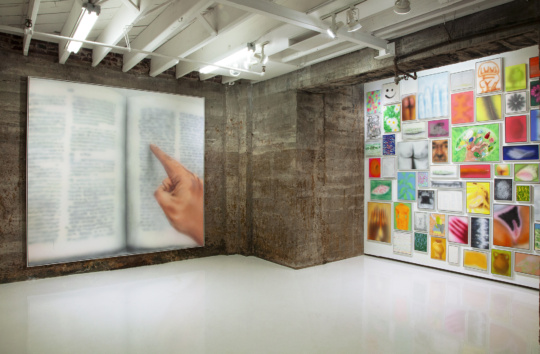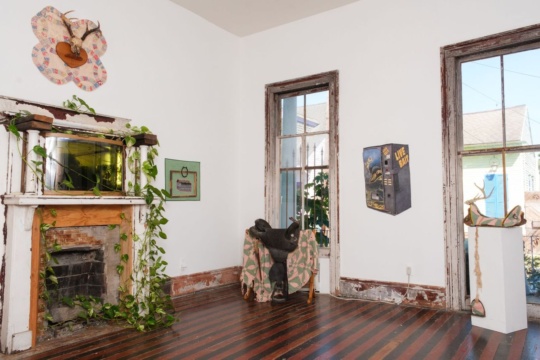Thirty Two
Businesses are built on relationships as much as product. Summer and holiday exhibits, generally group shows of artists, some not represented by the gallery, provide a testing ground. Odessa saw them as a trial run to check which artists received the best response from her core collectors, and, equally importantly, to discover how they functioned under pressure.
All artists tend to get pretty nervous before their exhibits. That’s understandable. They slave for years on a body of work, spend a fortune on materials and frames, invest their ego and every free moment, wrestle with ideas and failures, expose their results to the public and then wait. Most shows receive no response – no sales, no reviews, nothing except praise from supportive friends. Nerves are normal, but it was always good to have an idea of what volume of nerves she was going to have to deal with. Some artists are just not worth any amount of sales. If she had included the difficult old man she’d met at Bergamot Station in a summer show, she might well have decided not to show him at all. Nor would she have offered a solo show to one young man, a year out of grad school, who had demanded that she find him a low cost studio and cover all of his supplies and framing costs, demanded that the gallery pay for a full page ad in ArtForum, demanded that she not serve “this rotgut wine” at the reception because it would embarrass him among his friends. All of this before he had even completed anything to be in the show he was proposing. He was rather shocked when she politely declined to agree to his demands or set a firm date. She explained to him as gently as she could that she didn’t blame him for asking but galleries didn’t take care of artists the way he imagined and she really did need to see more than one little mock-up before committing to a firm date. His new project was very ambitious, massive wall sized paintings, each easily ten times the size of any painting he’d previously done, and she just needed to see at least one of them completed. Sometimes ideas don’t translate on such a different scale. When he indignantly threatened to leave, she nodded her head and agreed that he should do what he thought was best for his career. Her prediction to Maggie after he stormed out, slamming the door behind him, was that he would bounce between galleries before giving up. No one would treat him with the adulation and financial support he thought he deserved: he would end up hating art and despising the art world, belittling it at every opportunity. She’d seen it happen often enough before. It was a shame. He had talent. Talent, unfortunately, just isn’t enough.
She knew all too well that no amount of vetting actually worked. A good example was the artist whose work she had shown who started painting insipid images of the Buddha that didn’t even make it to the level of kitsch. He was incensed when Odessa declined to offer him an exhibition for them and threatened to file a lawsuit for religious discrimination. When his attorney/wife called demanding the grounds for the rejection, Odessa took the time to explain, “The problem with his new work is not religion or the message: it’s their sappiness. If he wants to create sweetness in the world, maybe he should use real syrup on them so something about them would be authentic. There may well be a market for them, just not at my gallery.”
Why any artist thought that threatening or berating a gallery owner would help their careers was beyond her.
Her summer shows generally included four artists, usually split evenly between the LA area and the Bay area. This year, because so many galleries had closed and opportunities were fewer, she selected eleven artists, six from all over the country, and displayed them more salon style, in groupings across the walls. Her favorite among them was Dick, not because his work was dramatically better than the others. It wasn’t. Simply, he was such a delight to work with. He always funny and clever and came to every single one of her receptions with an increasing entourage of friends. And his friends bought work. The collectors she invited to a champagne preview the evening before the reception also found his enthusiasm charming. His and the exquisitely obsessive work by a very shy young woman from Menlo Park were the only works to sell during the get-together.
The reception itself was packed. Three of the four New York area artists had friends and family in the LA area and flew out for the show. The Chicago artist came as well, bringing his children with him to visit Disneyland. The local artists and the San Francisco artists each brought in a big bunch of friends into the space making the turn out really impressive for a summer show. Odessa was hauling in another case of wine from the back room when Kay, who had been standing by herself in a corner, confronted her.
“I thought you were going to invite me to be in this. Paula said you would.”
Odessa always tried to be polite to people. Call it Southern manners or call it good business sense. Artists change styles and it never makes sense to insult anyone. “Kay, thank you for coming in. It’s so nice to see you once again. It’s been a while. I’m sorry if I wasn’t completely clear during our studio visit. I honestly don’t remember even mentioning this show to you.”
“I don’t know why you didn’t invite me. My work is better than that New York guy’s,” Kay blurted out, pointing at Dick’s work.
“Dick lives in LA, Kay. That makes him a local artist. And again, if I gave you the impression you would be included in this show, I sincerely apologize.” Odessa smiled at her and thanked her again for coming to the gallery.
Just Like Suicide pt. 16
Related Stories
Reviews
Reviews
Mood Ring
Kevin Ford: Ids of March at Tops Gallery, Memphis
Maria Owen reviews the playful invitations found in Kevin Ford's Ids of March at Tops Gallery, Memphis.
Cora Nimtz: Unlikely Hunter at The Aquarium Gallery and Studio, New Orleans
Virginia Walcott reviews the Southern traditions, stereotypes, and romanticism found in the assemblages of Cora Nimtz: Unlikely Hunter at The Aquarium Gallery and Studio, New Orleans.
How To Get Free
Pieced together through collage, video capture, and a spoken poem, artist Kay-Ann Henry presents the intricacies of Afro-religious practices and Jamaica's particular expression of obeah, pocomania, and kumina.




